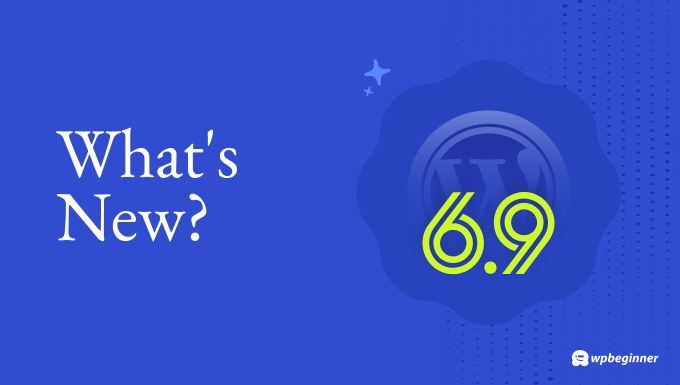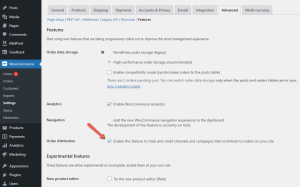If you’re planning on building your website you may have heard of Webflow and WordPress, two of the most popular website builders available today. But before you can begin your project, you should carefully weigh its pros and cons. Here we will compare WordPress and Webflow to figure out which one is the better solution for your website.
Before we compare WordPress and Webflow, let’s briefly go over each one.
WordPress Overview
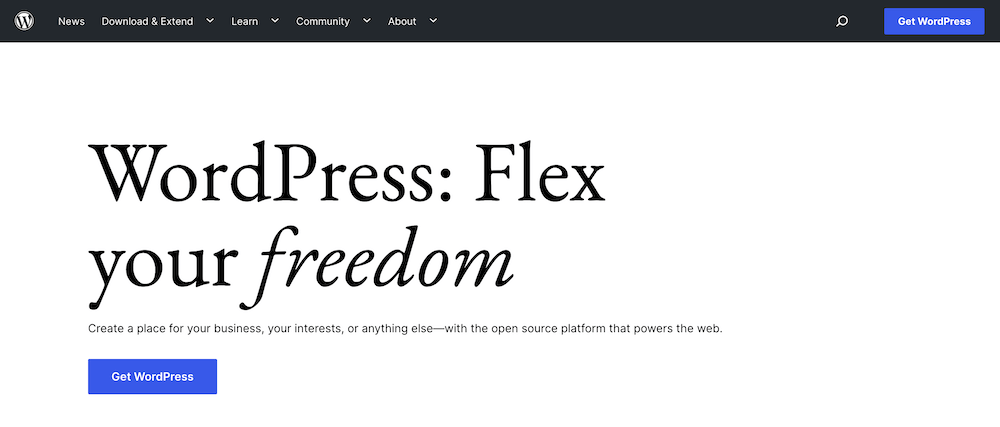
WordPress.org has been operative since 2003. It is a free open-source WordPress software that has seen rapid growth since its inception. Today, it powers over 455 million websites worldwide! Originally starting as a blogging platform, it now serves as a full-service CMS software that can power any site, including business websites and eCommerce stores to blog sites and directories.
Webflow Overview
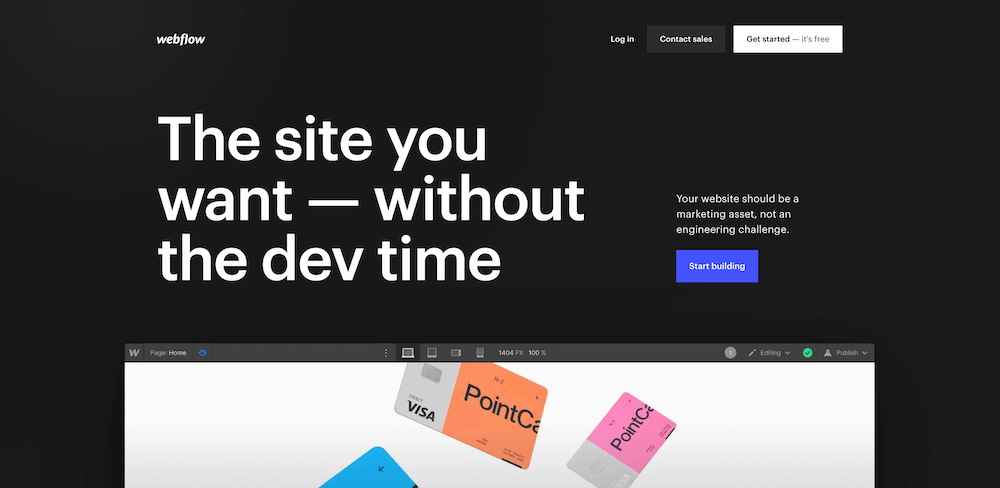
Webflow is an in-browser, no-code website design tool that is available for businesses, designers, and marketing individuals alike. This no-code website builder allows quite literally anyone to create a professional-looking website without typing down a single line of code. It was first introduced in 2012, and now powers over 100,000 websites for businesses both large and small. It can be used to design complete websites, dedicated landing pages, eCommerce sites, blog sites, and much more.
Now that you have a brief summation of what WordPress and Webflow are, we move on to comparing them both over a wide range of parameters.
WordPress vs. WebFlow Usability
WordPress and Webflow both are popular website-building tools since they don’t require any experience with coding.

WordPress is fairly easy to use featuring an intuitive visual editor (called Gutenberg), although you may have to deal with a learning curve at first. There are plenty of tools to get accustomed to including themes, plugins, and extensions. But once you do happen to understand them, you can easily make visually appealing website layouts. Plus if you don’t like the WordPress editor, you can instead use drag and drop page builder addons/plugins.
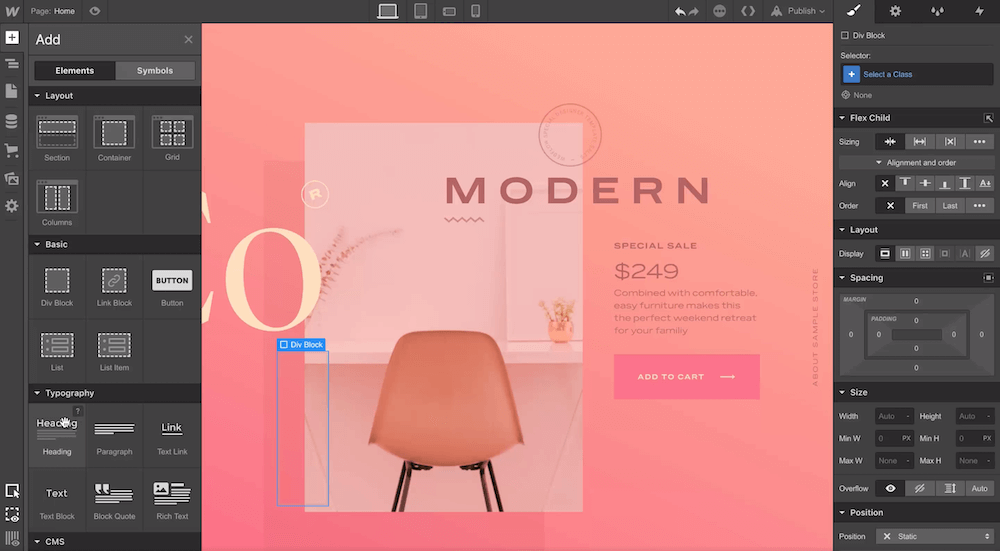
If we talk about Webflow on the other hand, you’ll find its builder dashboard to be a bit more complicated. It has plenty of features and users will need time to figure out what does what. You do get access to a lot of design and development tools, plus customization options but you’ll need time to master it all.
WordPress vs. WebFlow Features
WordPress and Webflow both offer several reliable features, some features they have in common, others they do not. Here’s a brief rundown of the main features each has to offer.
WordPress
- Themes and templates library
- Visual drag and drop design
- CMS
- SEO optimization
- SSL certificates
- Free eCommerce integration through WooCommerce
- Gutenberg editor/block editor
- Categories, tags, and custom posts
Webflow
- Visual editor
- Over 1000 themes to choose from
- Customizable templates
- CMS
- SEO optimization
- SSL certificates
- Drag and drop design
- Integrated eCommerce engine
WordPress vs. WebFlow Themes

WordPress offers a wide number of themes for you to choose from that pertain to the design of your entire site, including the style, the colors, the graphics, the sheets, and the code. In total, WordPress offers nearly 10,000 themes for free and even more premiums are available via reputable marketplaces like Themeforest, Template Monster and more. You can download any theme of your choosing and activate them for your website.
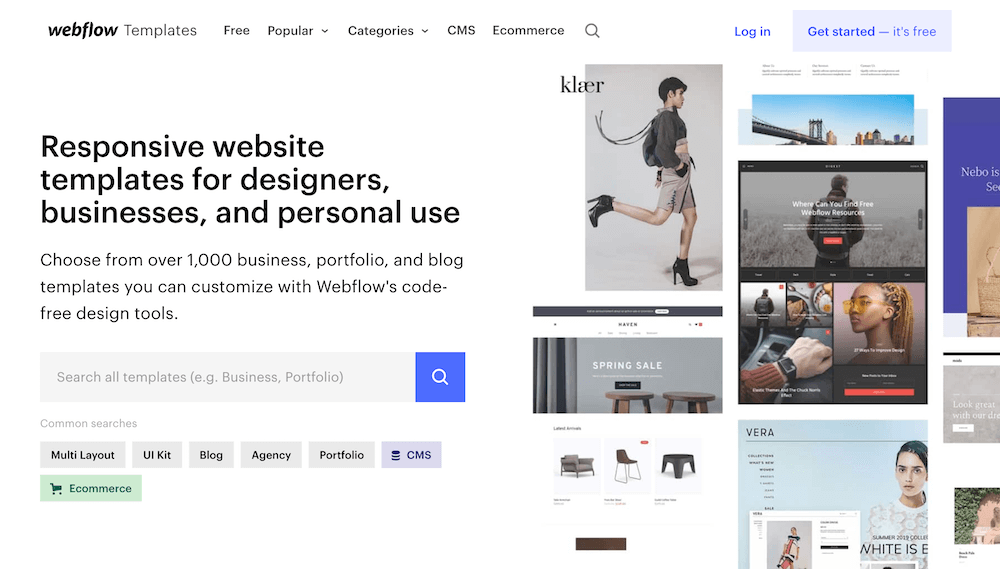
Webflow, on the other hand, is a bit limited when it comes to themes (which they refer to as templates). They offer only 1000 responsive website templates to choose from, most of which are premium add-ons, not free. However be assured that these themes are well designed, well optimized, and versatile. You’ll easily find a theme that fits your unique business profile.
WordPress vs. WebFlow Hosting
WordPress.org should never be confused with Worpress.com, both are two different solutions. While WordPress.com has a hosting solution in itself, WordPress.org will require you to separately purchase web hosting services for the website you create. Luckily there are many great WordPress hosting options to choose from, all of which offer WordPress pre-installed or a quick 5-minute setup process.
On the other hand, WebFlow offers web hosting services to its users. Since it is managed-hosting, you don’t have to worry about any tasks associated with hosting, and instead focus on creating your website. WebFlow will handle the rest. Their web hosting is powered over Amazon Web services infrastructure, meaning you can expect fast and reliable hosting services.
WordPress vs. WebFlow E-Commerce
Both WordPress and Webflow can help you set up an eCommerce website.
Opening up an eCommerce website with WordPress is incredibly easy. You simply have to install and set up the WooCommerce plugin (or any eCommerce plugin of your choice). Although most people prefer to use WooCommerce since it is free, easy to use, and reliable. WooCommerce will further offer you plenty of templates and themes to choose from, which can further be customized to your liking.
On the other hand, Webflow does not need an added plugin, the e-commerce feature is already built into the Webflow service. However, you will have to pay for their eCommerce plan to get access to these services. Webflow will also limit the number of products you can sell according to the plan you purchase. For instance, their standard Ecommerce plan comes at $42/month and allows you to sell 500 items (WordPress has no such limitations). Furthermore, Webflow lacks plenty of the core eCommerce features and supports a limited number of payment processors.
WordPress vs. WebFlow Integrations
When it comes to integrations, WordPress is the obvious winner. Simply because it supports a much wider range of integrations. For example, WordPress integrates with event and ticketing platforms , Shopify, BigCommerce, dozens of social media, email marketing, analytics, page builder, and dropshipping plugins. The latter one allows you to sell products without needing an inventory by integrating with large distributors like AliExpress or Printful. You can find plugins for quite literally any integration you can imagine. The integration itself is quite easy to achieve, giving it another boost in usability.
Comparatively, Webflow isn’t as competitive when it comes to added integrations. You won’t find the same ease of versatility WordPress has to offer. Moreover, some integrations may be pretty straightforward but others may require troubleshooting. In many cases, you may have to use code embeds or other interfaces to get required integrations.
WordPress vs. WebFlow Support
If you’re planning on building your website, you will need to connect with support a lot more than you can think. Whether you need to get guidance on added integrations or features, and how you can enable them, the support services will guide you well.
WordPress support is mostly free support from the community since it is an open source free software after all. You’ll find plenty of help with WordPress via support forums and groups where you can drop in questions for the community to answer. You’ll also find plenty of tutorials and guides online since WordPress is a pretty popular platform.
Webflow support is a lot more focused on the “Webflow University”. This is a massive library composed of detailed articles, tutorials, and guides on a wide range of topics. You can further connect with Webflow email support services or chat support. However the chat support is AI bot-driven, so we’d recommend using their email support services instead.
WordPress vs. WebFlow Pricing

For WordPress.org, the core software is free, and open-source, meaning anyone is open to using it without cost. However, there are some added features you may have to purchase. Web hosting services, for instance, are not free and will have to be purchased if you hope for your website to go live. Paying for your web hosting (and domain) are some extra costs you will have to put up with. You may also have to pay additional for themes or premium plugins if you like, but you’ll have a wide selection of free themes available as well. The final pricing is therefore arbitrary depending on the web hosting service you hire and the themes/plugins you purchase.
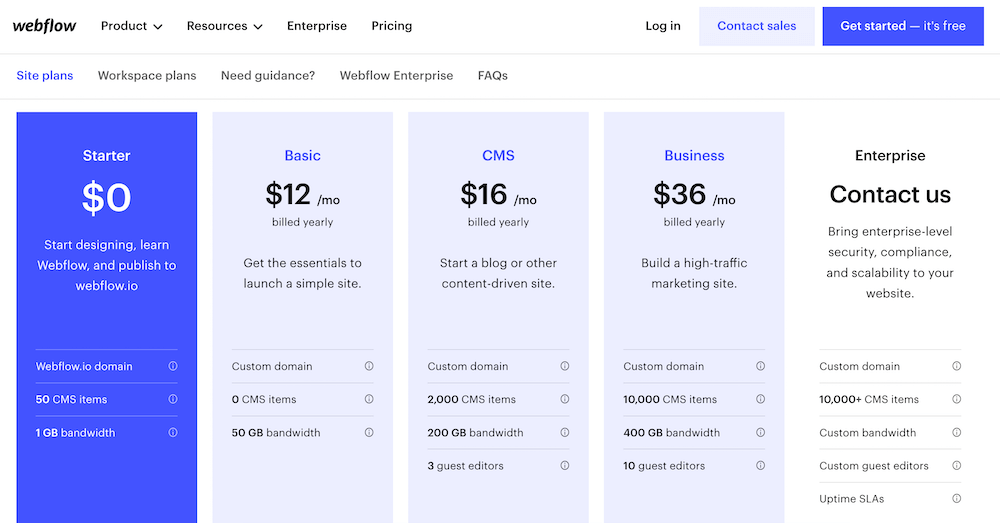
Moving on to Webflow. The actual Webflow designer is free, meaning you can sign up and start creating your website. However, if you want to launch your website you’ll have to sign up with a paid plan. Webflow tends to offer two types of plans: site plans and workspace plans. A site plan will allow you to host your website on Webflow after designing whereas a workspace plan will allow you to host your website elsewhere after designing. The basic Site plan comes at $12/month whereas the basic Workspace plan comes at $28/month.
Which Is Better?
Now that we’ve discussed the major features both WordPress and WebFlow have to offer, we can now decide on which platform will serve you better.
In reality, there is no one real winner. Both websites have their pros and cons. The one that serves you best will depend ultimately on your unique needs.
WordPress for example, is an easy-to-use website, has a lower learning curve, and plenty of resources, themes, integrations, and plugins, and may even be cheaper than Webflow. However it is a self-hosted software, meaning you’ll have to handle maintenance, security, and updates yourself, you may also find the lack of direct customer support a bit difficult to work with.
Similarly, Webflow has a powerful visual editor, has plenty of the basic features you need to build a professional website, offers web hosting, and offers direct customer support. However on the downside, the editor may seem overwhelming, you’ll only get access to limited themes, plugins, and integrations, and it may be a bit more expensive.
We’d recommend that if you are a new business owner looking to create a website, you may find Worpdress to be more helpful. If you are a web designer who is designing websites for other clients then you may prefer Webflow instead. Its web design tools are simply unmatched and will serve you well!

